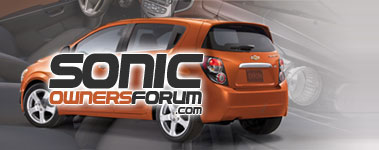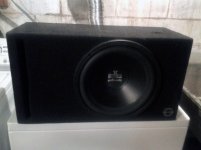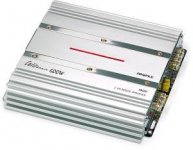I try to stay out of these threads because I typically do not agree with others, however I can't help my self.
Typically speaking the larger the cone the higher the output, however you will also have more distortion. Larger cone = more cone breakup = more distortion, period. Two 12" drivers are approx the equivalent of a single 15" but will have substantially less distortion than the 15. 12" is basically as large as you want to go as any larger results in huge amounts of breakup. ALL cones have breakup, even an 8" aluminum cone will flex believe it or not as can be seen under a strobe light. So no matter what anyone says, MORE small drivers is always better than less larger ones as far as distortion goes. Many 3" drivers can produce the same frequencies and output as a 15, or 18 or 30" driver. Its all about the amount of movement the cone can produce as well as the surface area. I can assure you ten 3" quality drivers will produce a very beautiful output at 40Hz.
Something else to keep in mind and I think most don't realize this, 800 watts is only 3dB louder than 400 watts no matter what the conditions are. 800 watts is only 6dB louder than 200 watts. If someone has a 200 watt system capable of 120dB than using an 800 watt amp with the same efficiency system will only result in 126dB, not much of a difference other than a huge increase in heat. Keep this in mind the next time someone tells you their 400 Watt amp is a lot louder than your 100 watt amp, it cannot be more than a 6dB difference no matter what from a power standpoint. Claiming specifications are wrong is a whole other story, sure there are amps that claim to be 1KW but can't really do more than a few hundred. Many home theater receivers claim to be 700W but can't do more than a total of 200 all channels driven. Another thing to keep in mind is depending on how the amp is built distortion ratings are almost meaningless. A rating of 150W @ 1% THD doesn't tell the whole story. That amp may produce a little as 0.002% at 100W. Same as an amp rated 500W @ 0.002% will go up to 10% as soon as you clip it. To really know you would need a power vs distortion curve but either way the only way to keep distortion low is to not run out of power not to mention most woofers produce 1-5% by nature no matter what.
I hate ported speakers, sorry Quinton Exler. Only type of ported speaker I remotely liked was a passive radiator type. IMO a sealed enclosure built from 1" MDF with plenty of bracing and filled with fiberglass insulation is the only way to go.
K, sorry for the huge post but hopefully I helped somewhat.


